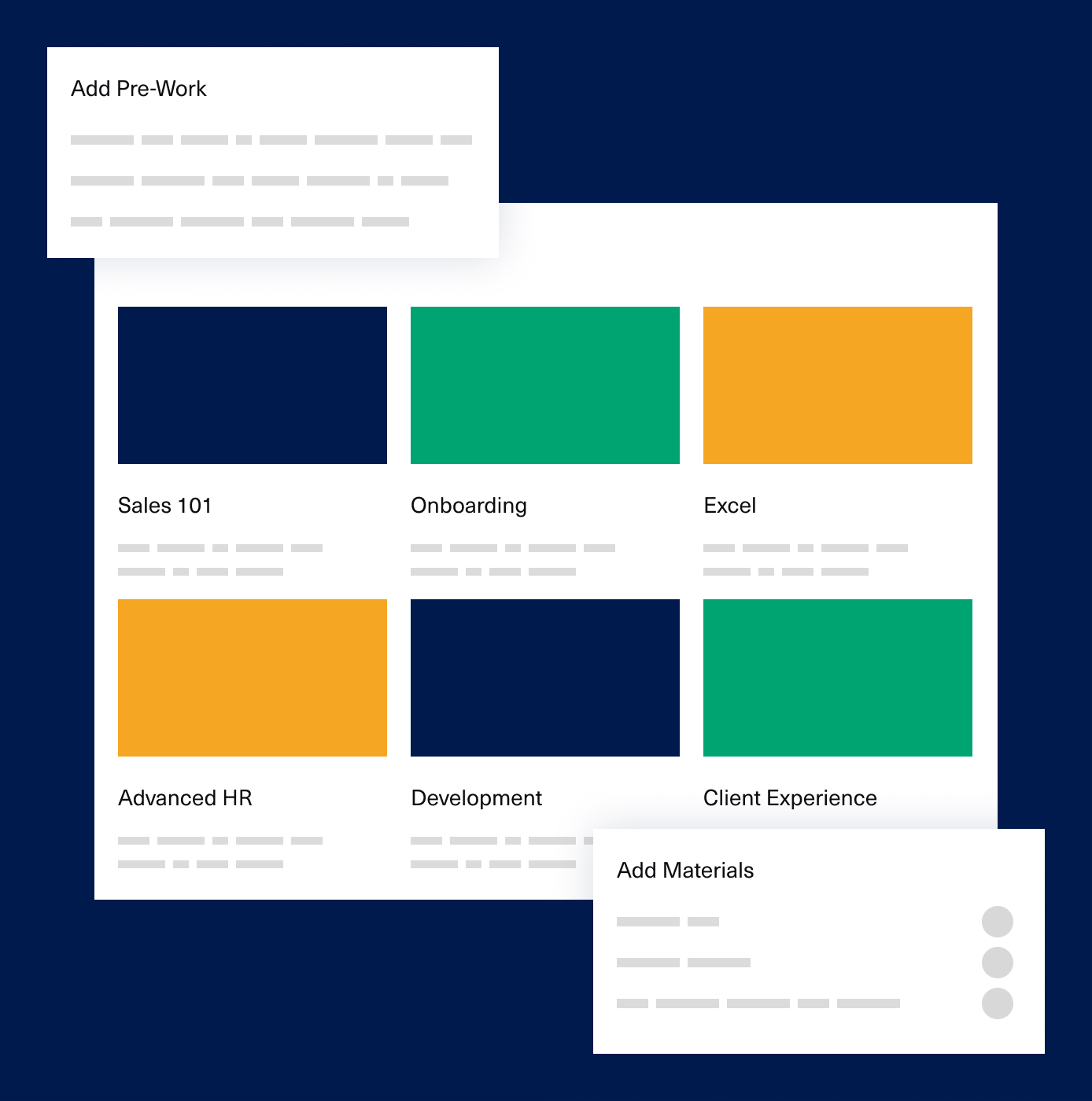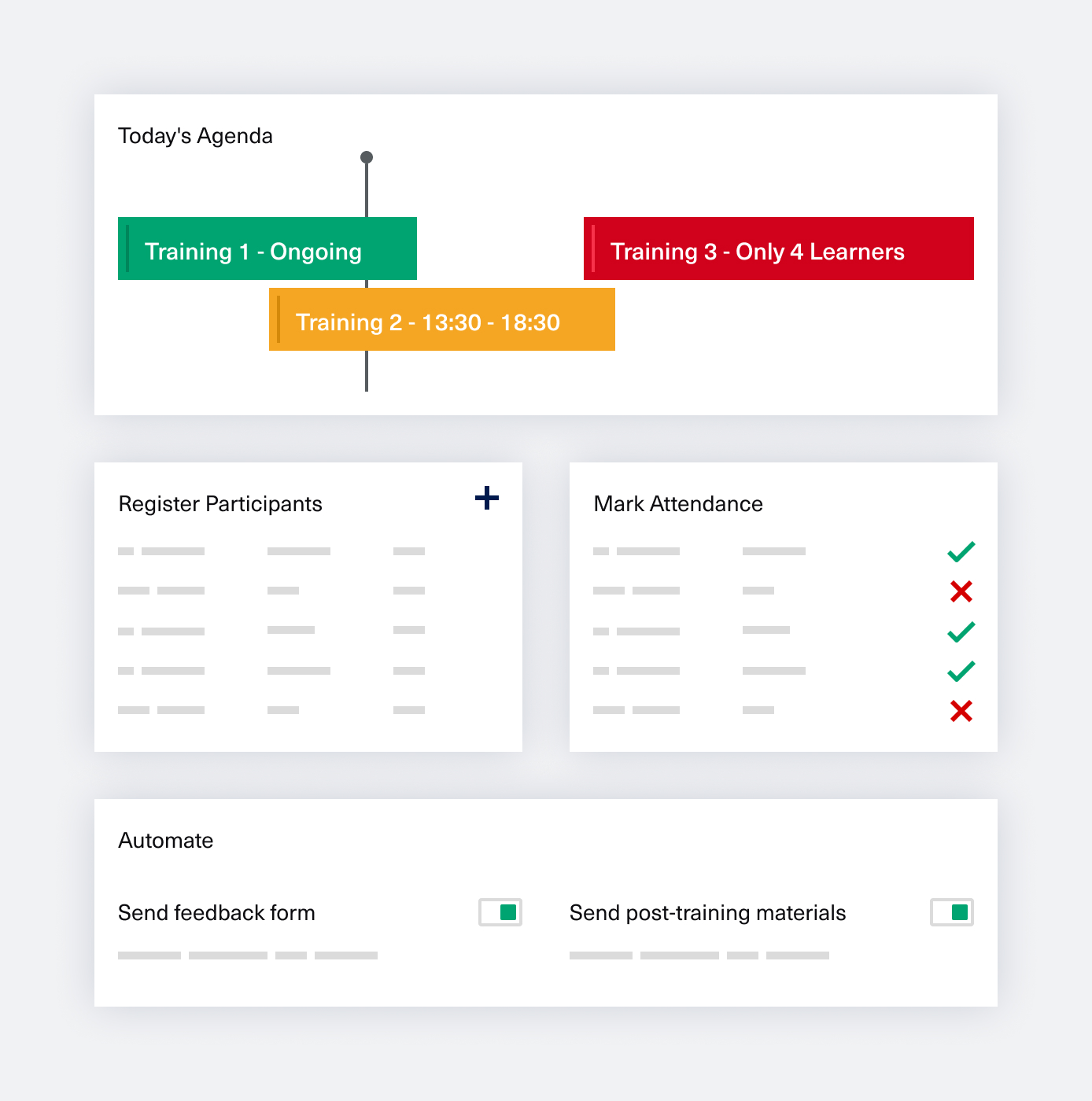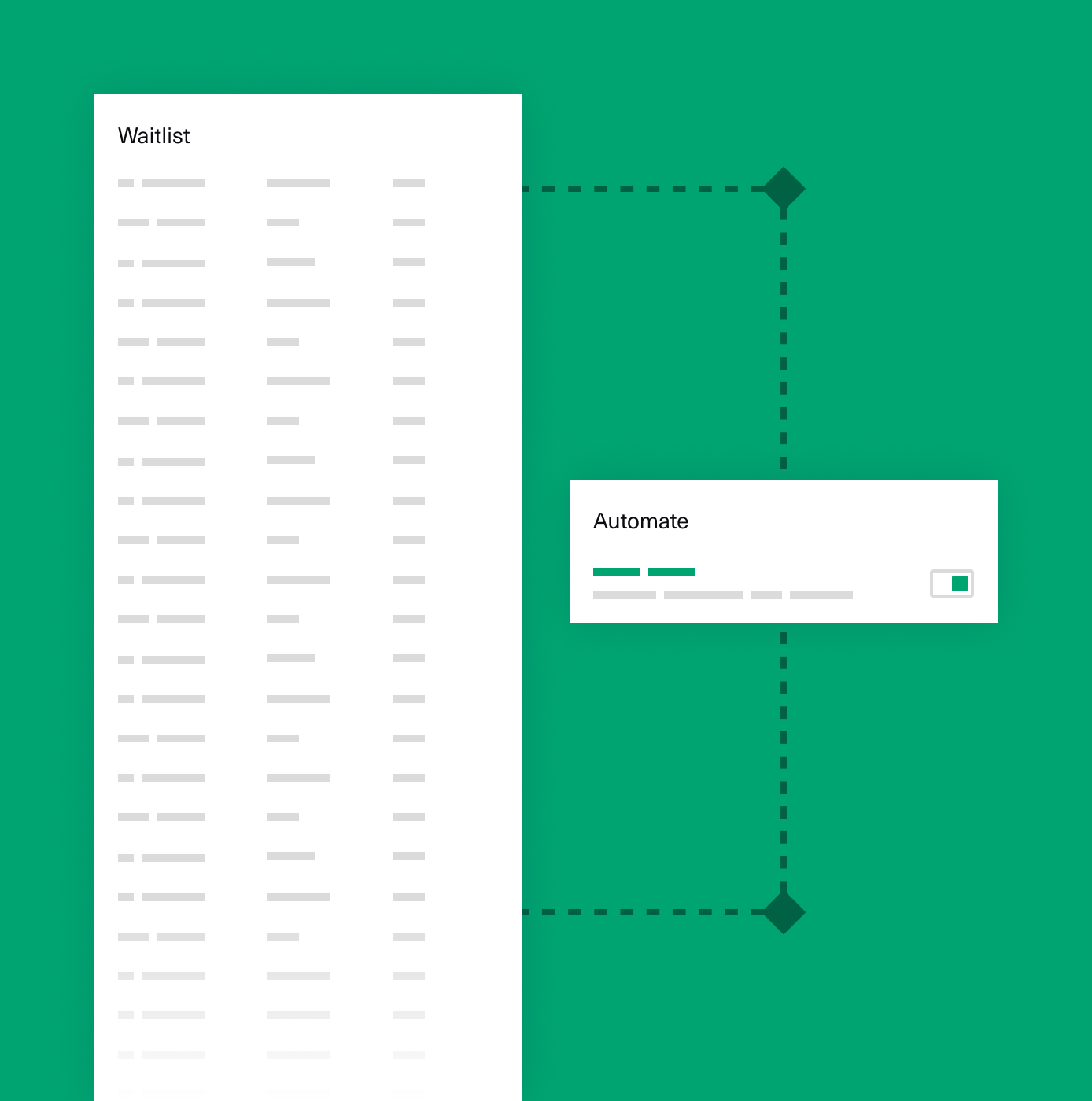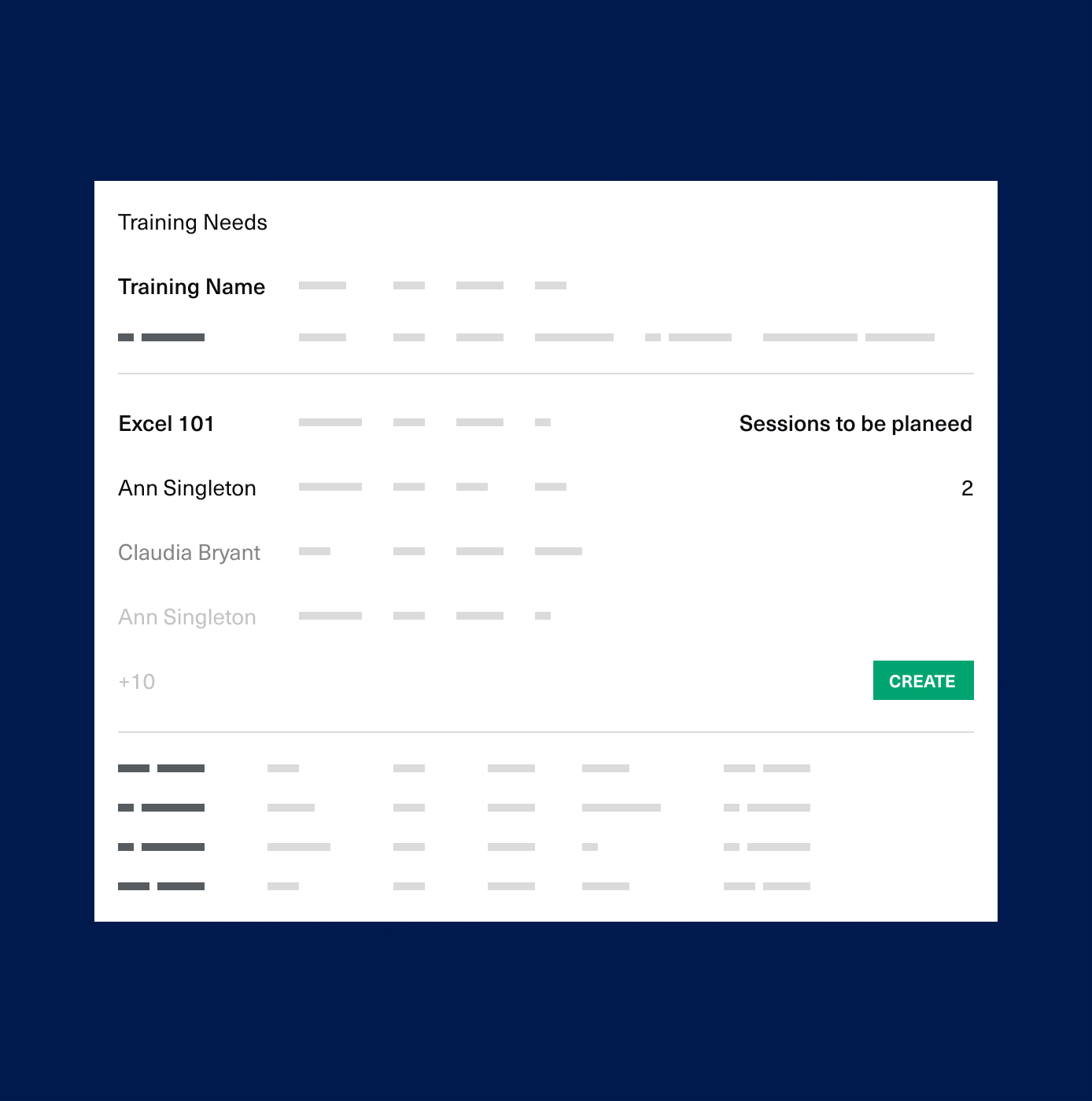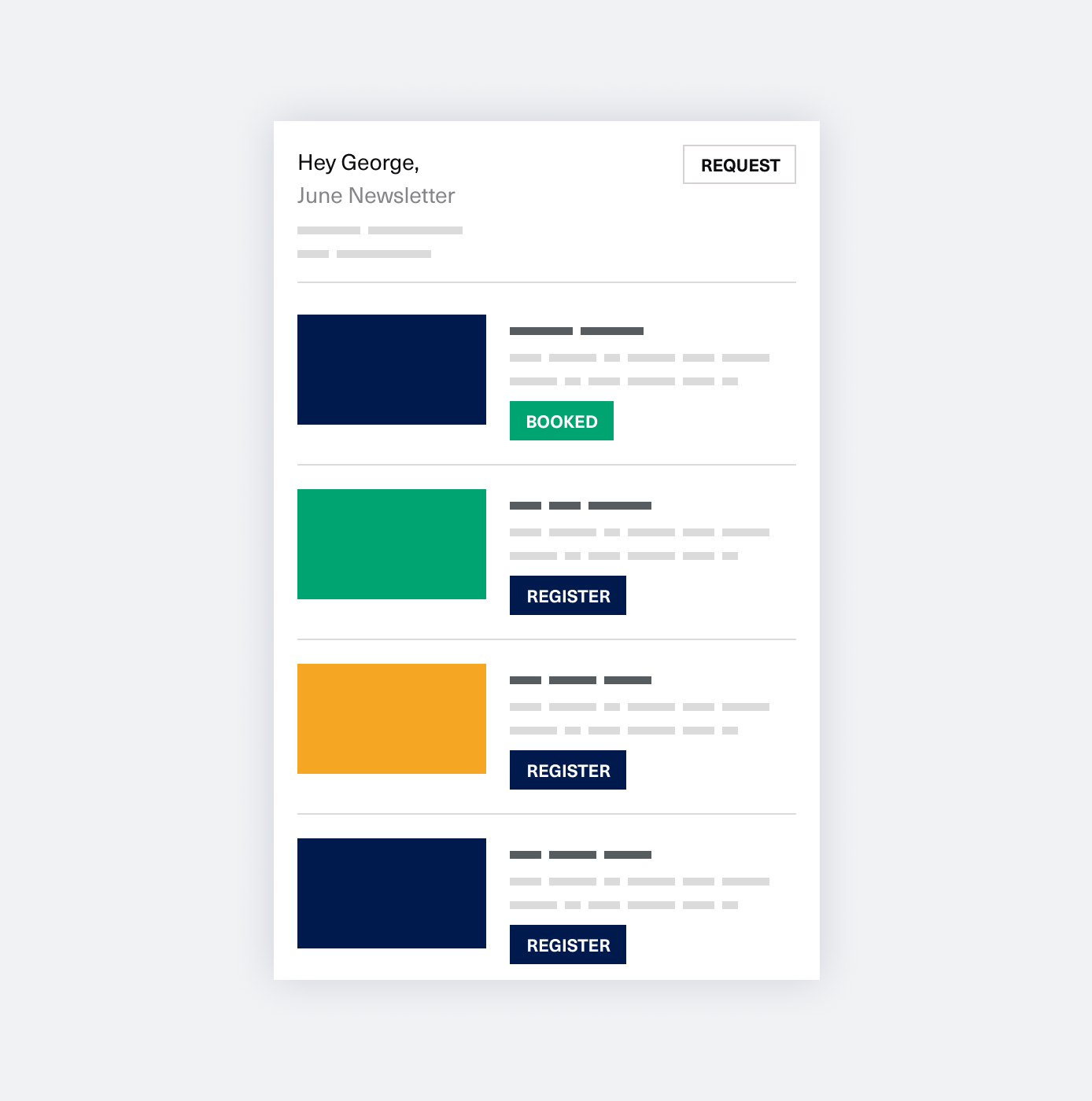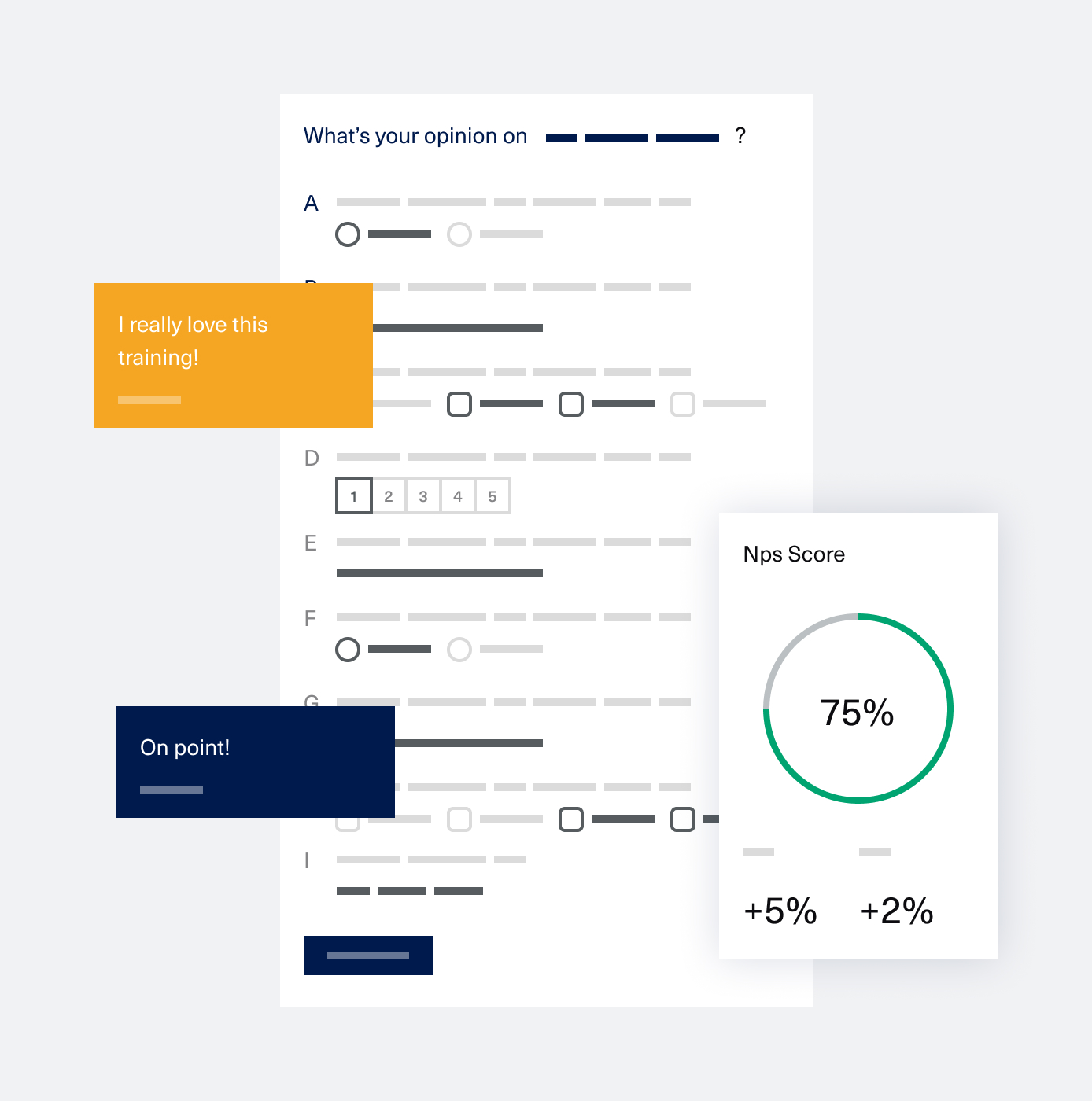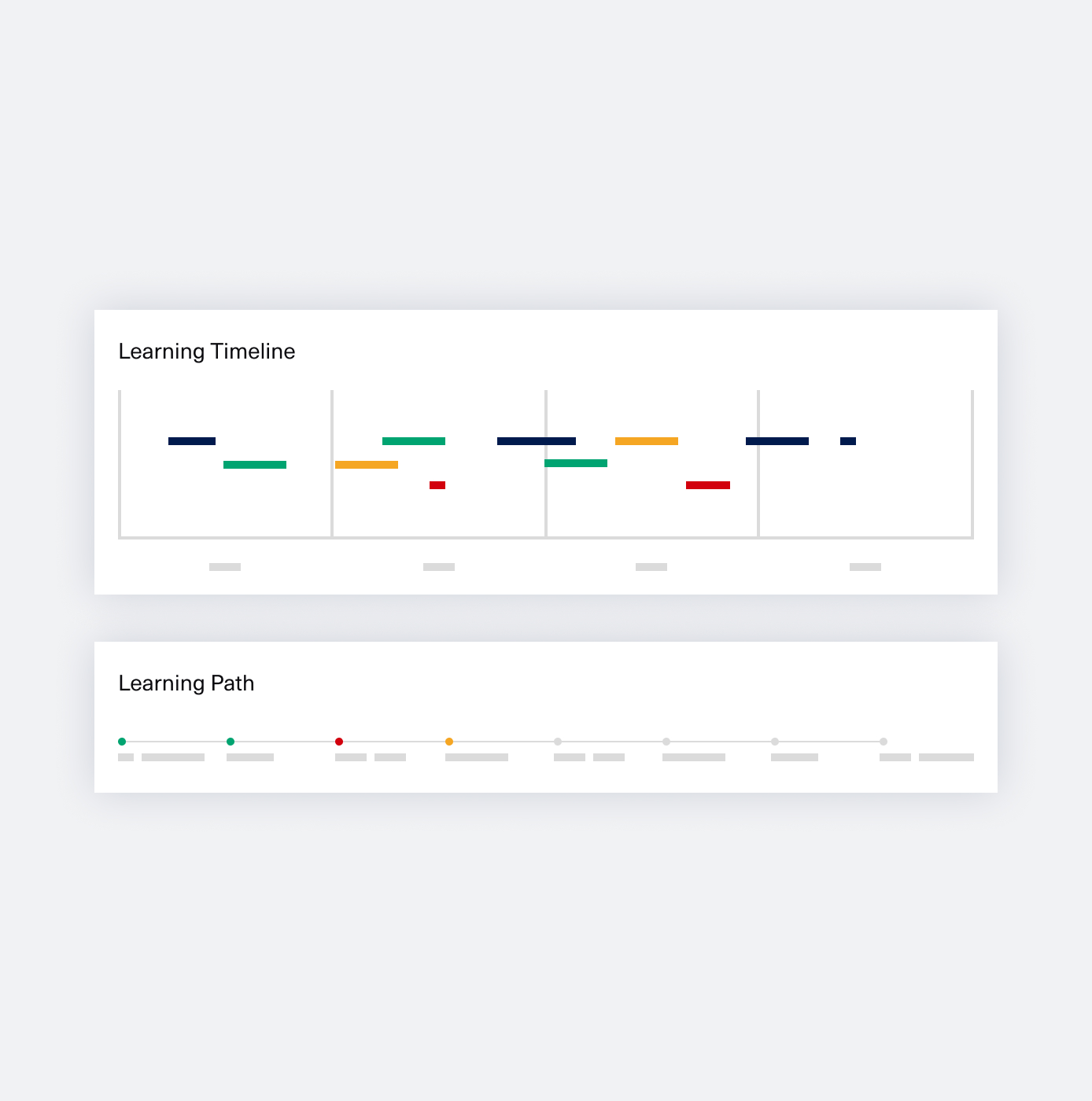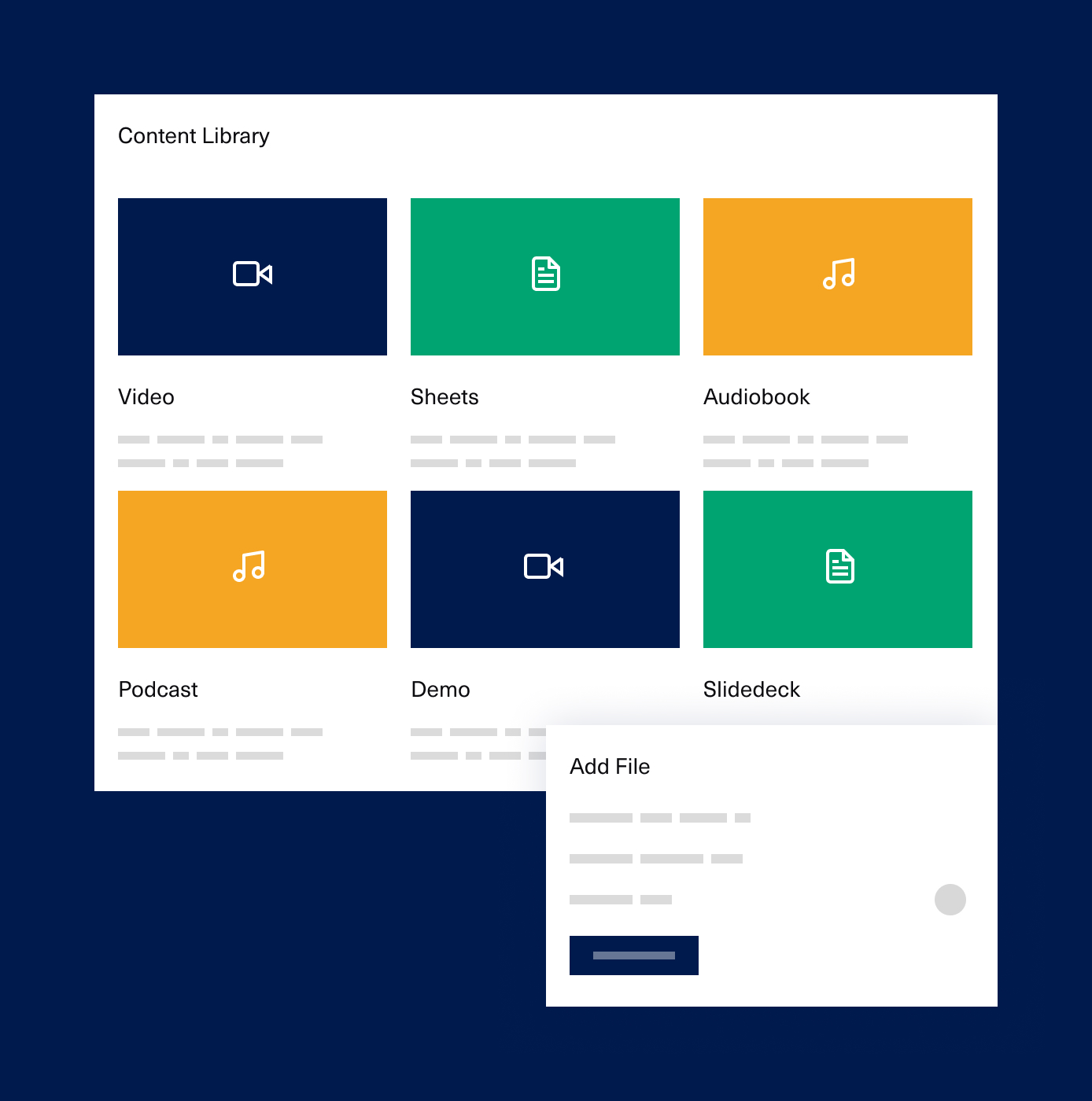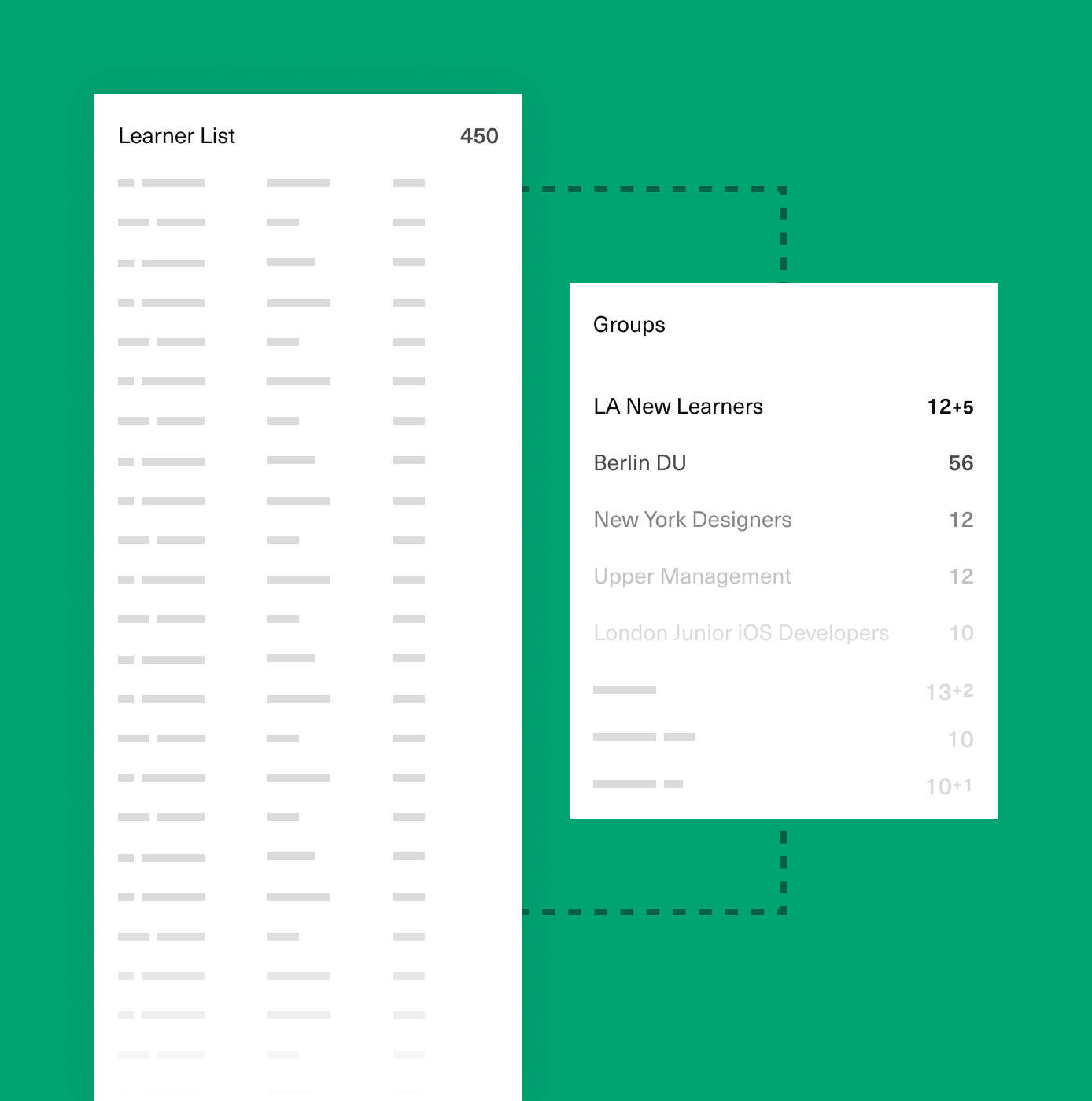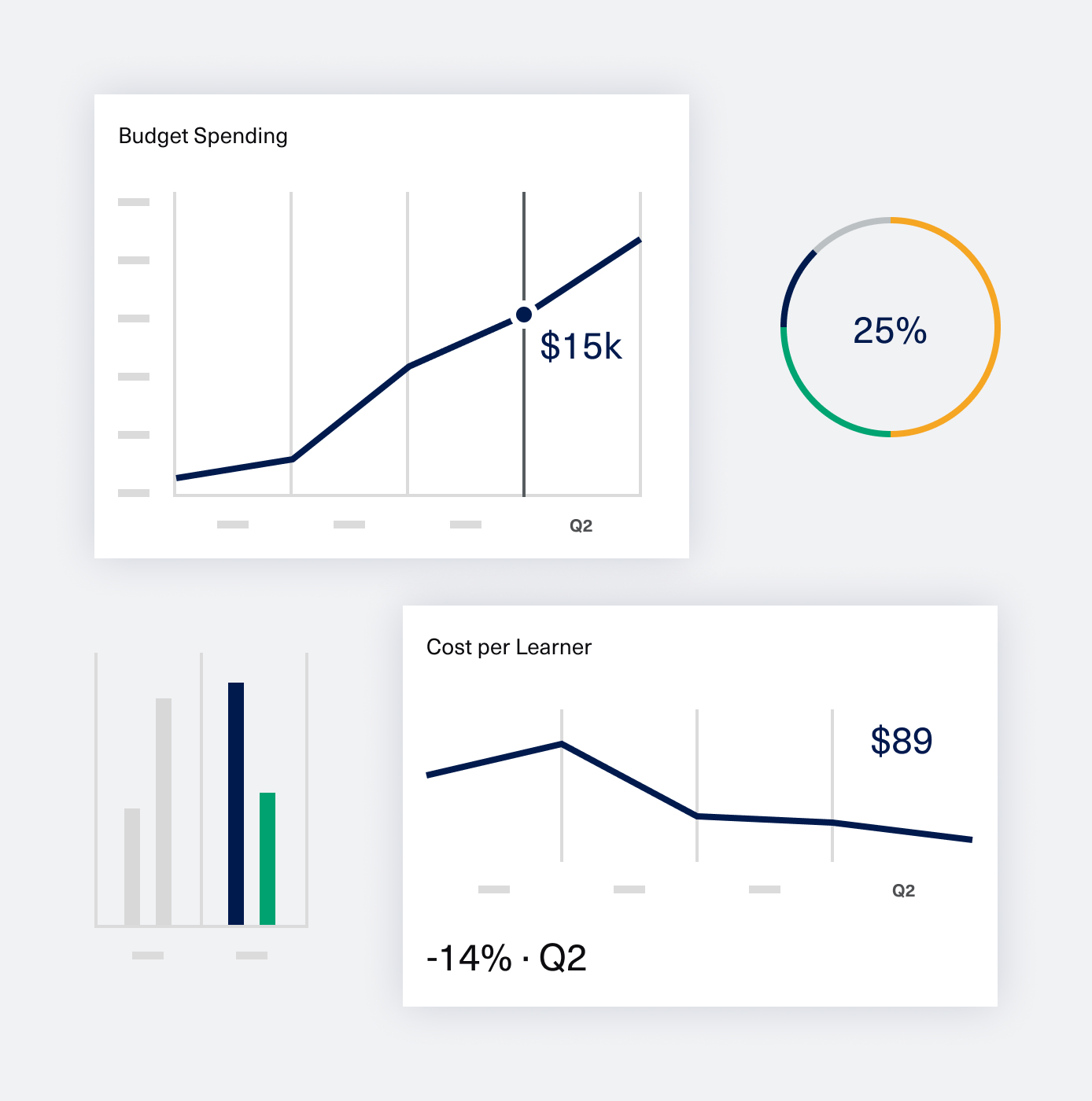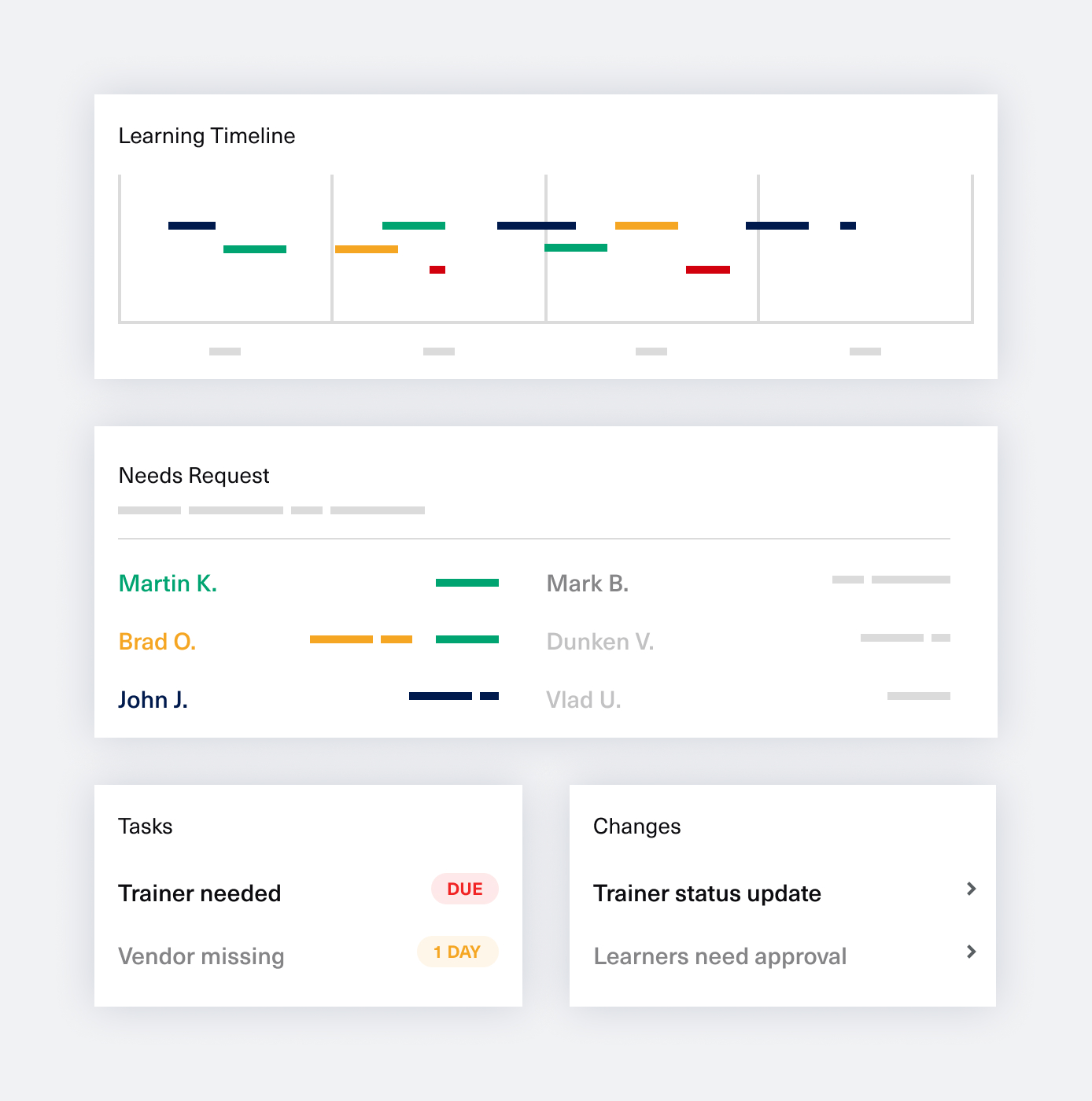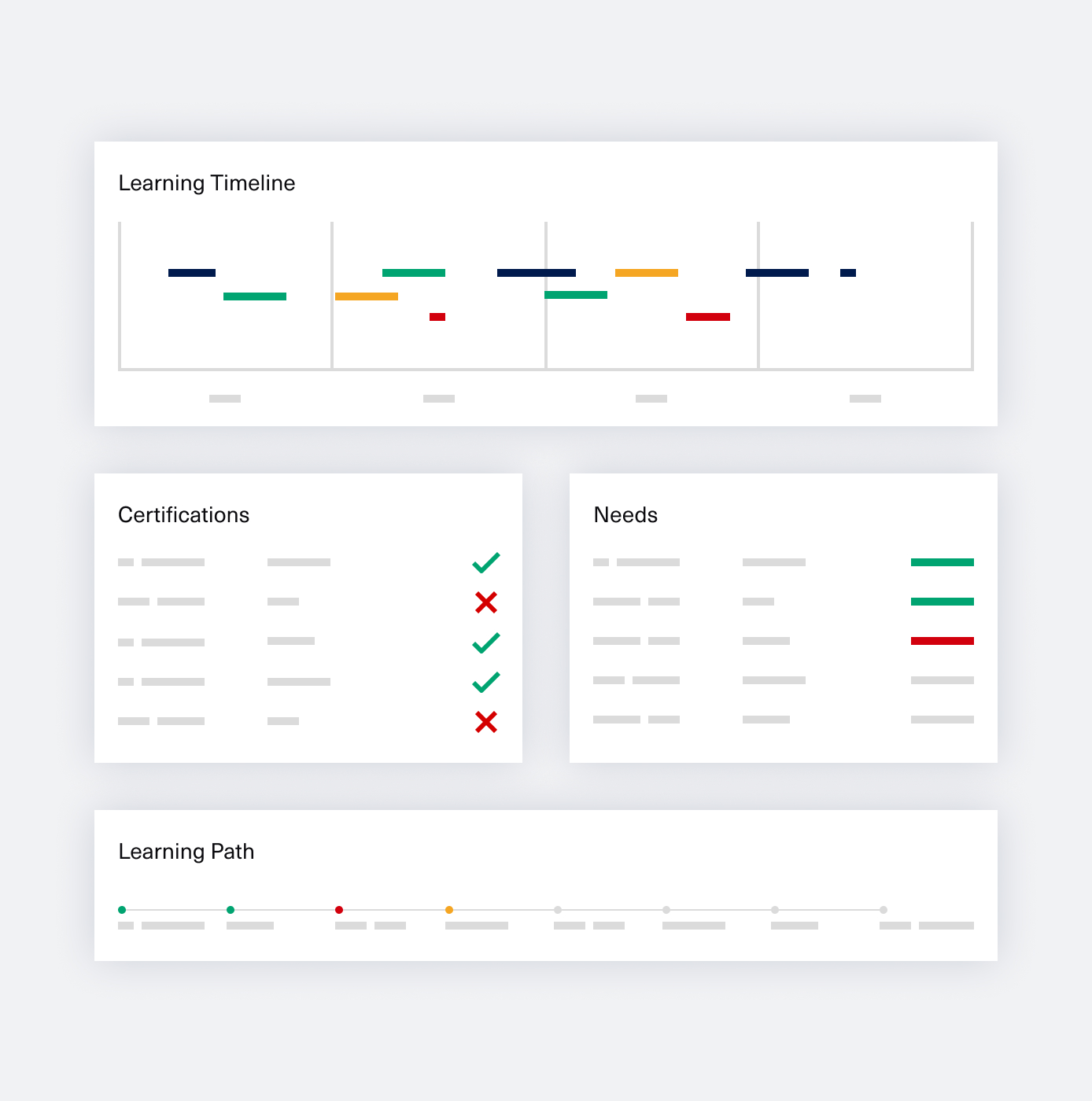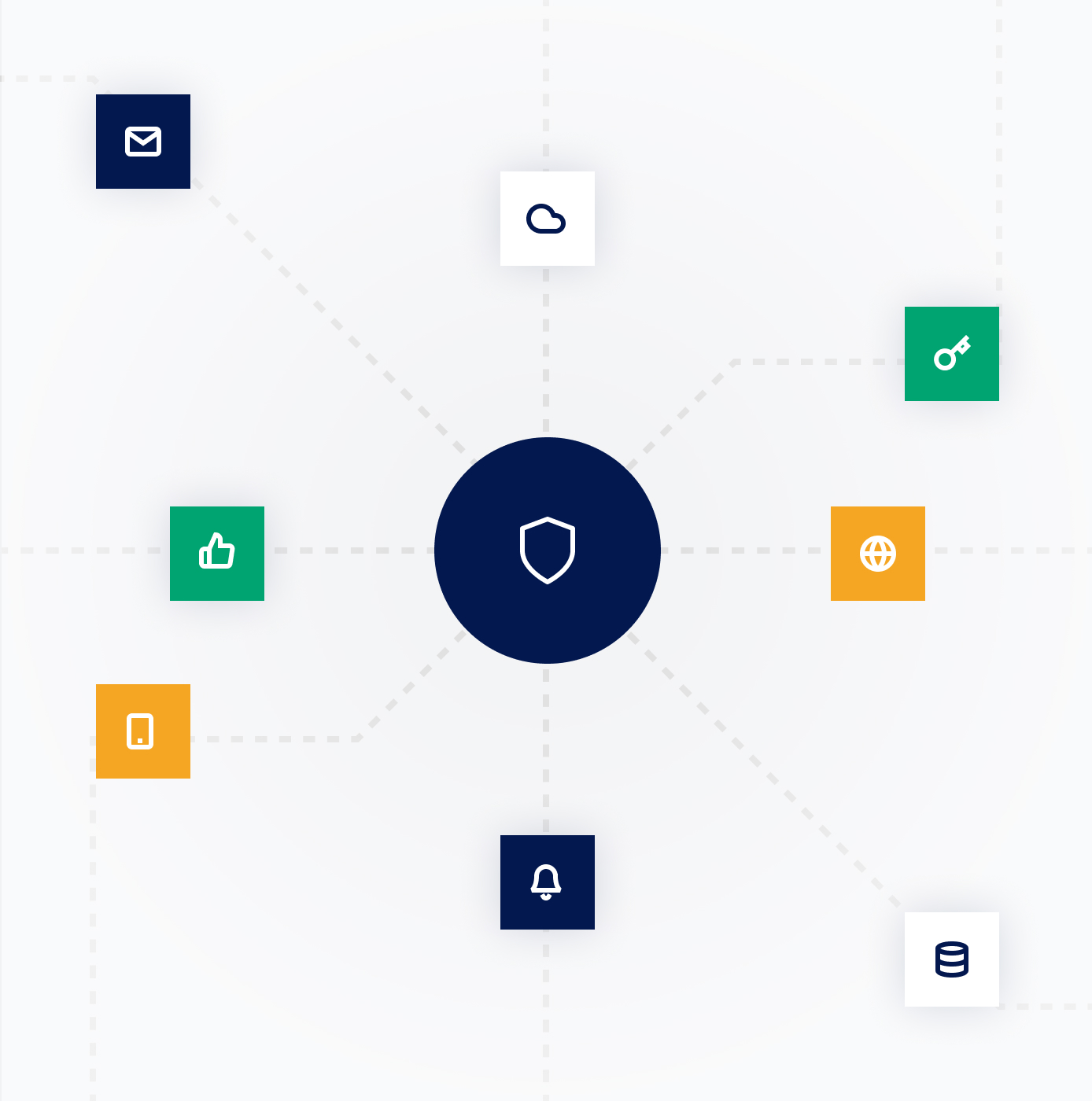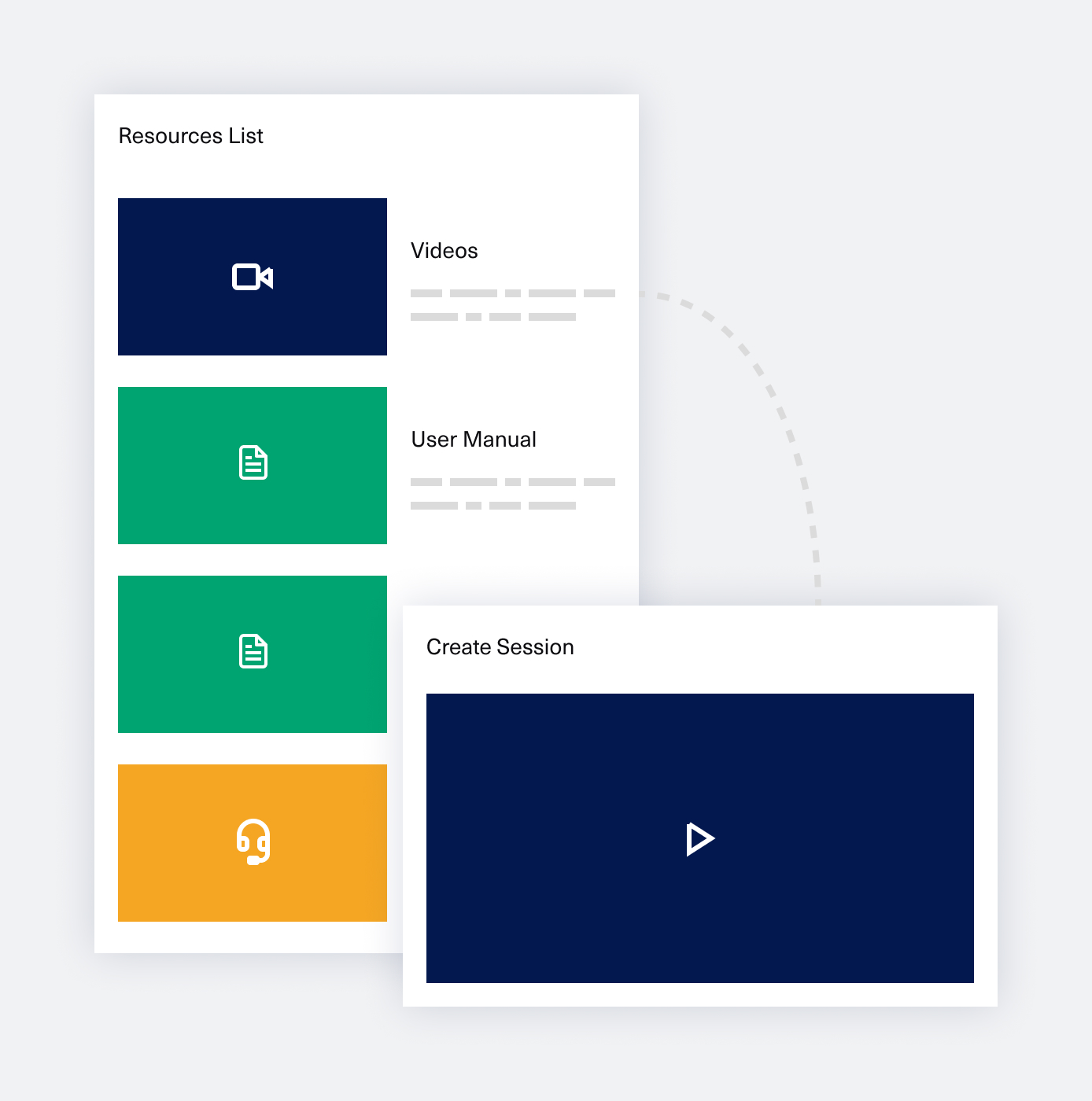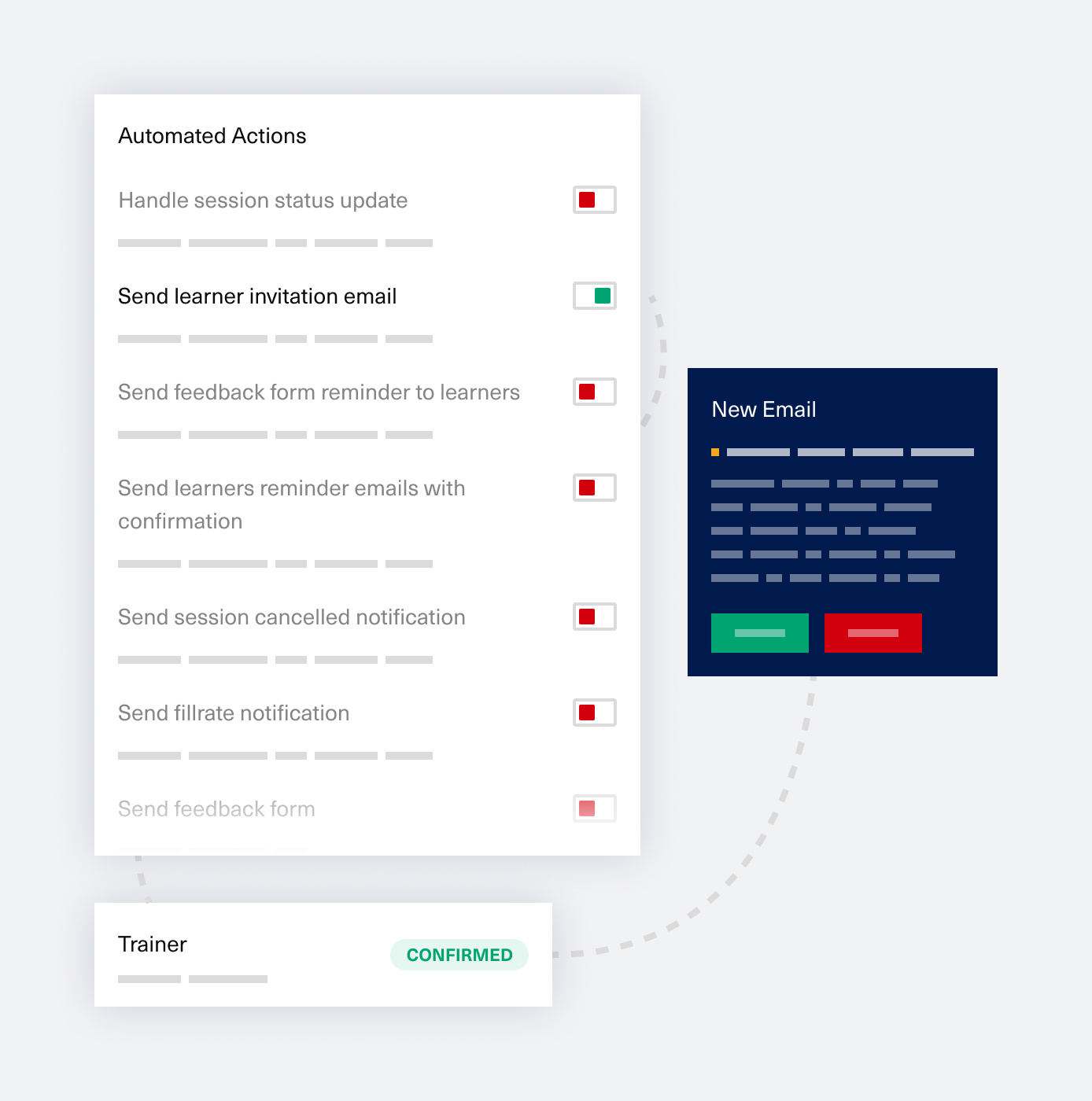Simply put, pre-testing refers to checking a learner’s prior knowledge or understanding of a particular subject before they start any learning activity. Pre-testing aims to identify gaps in employees’ awareness of the learning topic. This information is helpful in one of two ways: to ensure that employees start from the same knowledge base within the same cohort or to help the Trainer or Learning Experience Designer adapt the content based on the various knowledge levels identified during testing. Pre-testing can include a variety of assessment methods, such as surveys, quizzes, interviews, or simulations.
How does pre-testing improve learning transfer and knowledge retention?
When L&D Professionals assess learners’ prior knowledge before they start a learning activity, they can tailor the content and approach to meet the learner’s individual needs better – even if we are talking about a cohort for live training or asynchronous content delivered online.
Pre-testing also improves engagement by allowing employees to assess their current subject knowledge before beginning instruction. This enables them to focus more closely on the areas that need the most improvement. The simple act of asking a learner questions on the topic they are about to start learning put them in a mindset of readiness to receive new information and solidify what they already know.
Additionally, being consulted on the content to be delivered improves the participant’s trust that the learning activity will be worthwhile for them – of course, if the information is adequately taken into account and used during content or experience design. The L&D Professional can frame pre-testing as consulting, which helps learners relax, be more engaged in the activity, and be open to receiving information. They can expect that the content will allow them to focus only on the topics they need to learn rather than spending time on concepts they already understand or, on the contrary, that are far too advanced for their current level.
Pre-testing can also help to motivate learners by providing them with an opportunity to measure their progress against their initial knowledge level. Learners have a greater sense of accomplishment as they learn and observe their improvement, similar to the effects produced by game design.
Another great benefit of pre-testing is that it prevents waste. It saves the L&D professional from creating or sourcing irrelevant content for learners and the learners from suffering through the pain of being force-fed information that’s unsuitable for their level or interests. Pre-testing helps narrow down the scope of the learning content while supporting a critical component historically (and famously) lacking in too many companies’ learning libraries: adaptation to the reality of the jobs to be done. The main drawback of the enormous quantity of information (and the crux of any good Learning Strategy) is that there’s too much content out there but little contextualization. A pre-test can bring the Learning Experience Designer or Trainer down to Earth very quickly by focusing on hands-on examples, questions, or experiences that people want to learn about specifically. This further increases learner engagement and learning effectiveness.
How does an L&D Professional implement pre-testing while creating content?
To effectively implement pre-testing, L&Ds must first identify the learning goals and objectives and focus on assessing the learner’s current understanding of the topics to be covered in the learning program. This activity becomes especially important when considering impact measurement at a later stage and L&D ROI in general. Establishing a knowledge baseline is immensely helpful in any measurement effort, which is what precisely pre-testing offers.
Below are some examples of pre-testing for learning topics from various business areas.
A pre-testing survey about leadership could contain topics such as:
• What are your current leadership skills?
• What have been your past experiences with leadership roles?
• What do you hope to gain from this leadership learning program?
• What challenges do you think you may face in a leadership role?
• What specific areas of leadership would you like to focus on?
• How do you rate yourself on communication, decision-making, empathy, mentoring, accountability, etc. skills?
For an engineering program, pre-testing could include a quiz to assess the learner’s understanding of software programming concepts, such as data structures, algorithms, or automated testing.
For a procurement course, pre-testing could include an interview to assess the learner’s knowledge of supply chain management and procurement processes.
In a manufacturing environment, you could create a list of safety checklists and protective gear items and ask the participants to prepare for a specific task while rating their actions. Following that, you could try a practice run of a procedure with no machinery or tools involved – even with verbal descriptions of the steps. At the same time, you can take notes on the topics that participants skip over to reinforce those topics later during content creation or the actual training session.
Another way to implement pre-testing could be through scenarios or simulations as an alternative to surveys. To make it possible to establish a baseline for simulations, set measurable goals. For example, count the number of learners who completed the simulation, the average score, or the time to completion. You can also use a rubric to assess the overall performance on the simulation, such as critical thinking or problem-solving. The measurement scale for a critical thinking rubric could include the following criteria:
- Ability to identify the main problem and relevant information.
- Ability to analyze and evaluate evidence and draw logical conclusions.
- Ability to develop creative solutions.
- Ability to apply knowledge and skills to new situations.
- Ability to work independently and collaboratively.
To make the pre-test results measurable, you can assign numerical values to the responses or actions of the learners. For example, suppose a survey asks participants to rate their current skills on a scale of 1-5. In that case, you can assign a numerical value of 5 to “expert” and a numerical value of 1 to “beginner.” This method will allow you to easily compare and measure the before and after survey results. Use this approach in all other forms of pre-testing to put in place a data-driven way to measure progress and the ultimate impact of the learning program.
. . .
So far, we’ve focused only on the pros of pre-testing. It can help companies better tailor the content to suit the learners’ needs. It can also support learning transfer and knowledge retention by ensuring that learners start from the same knowledge base. It can increase learner engagement, reduce time on task, improve test scores, and increase course completion rates. If adequately implemented, pre-testing is a nifty tool for establishing your employees’ baseline knowledge on any topic, and it can be extremely helpful in making sure that you don’t waste your L&D budgets on content that’s either too broad, too specific, or advanced for the audience that will receive it. It’s no secret that too much content offered to learners nowadays is so generic that a simple Google search might as well cover it.
What about some of the cons of pre-testing?
This activity can prove to be time-consuming and may require the development of additional resources. The time it takes to implement pre-testing will depend on the complexity of the topics considered and the assessment method used. Simple pre-tests, such as surveys or quizzes, can usually be implemented in a relatively short amount of time. More complex pre-tests, such as interviews or simulations, may require more time and resources to develop. Additionally, Learning Experience Designers may need to spend time creating further learning resources based on the pre-test results.
Pre-testing may be ineffective if learners are not motivated or do not have sufficient prior knowledge. If learners are not sufficiently motivated, they may not take the pre-test seriously or attempt to guess the answers without fully understanding the content. Additionally, if learners do not understand the topics assessed, they may not be able to evaluate their knowledge accurately; this is a kind of “I don’t know what I don’t know” situation. To ensure the effectiveness of pre-testing, L&D Professionals should check that learners are adequately motivated and that there isn’t a significant gap between the group’s level of preparedness and the content to be delivered (for example, creating very advanced content for a team of entry-level employees who will likely not execute those tasks in the coming days).
Pre-testing may not apply to all learning topics. For example, soft skills – such as communication, negotiation, or conflict resolution – may not be entirely suitable. The learner’s prior knowledge is both difficult to measure and very situation-dependent. Similarly, topics that require hands-on experience – such as operating machinery or performing first aid – may not lend themselves well to self-evaluation; an instructor can only accurately assess the learner’s prior knowledge through practical experience. Another group of topics might be creative writing or graphic design – it’s challenging to apply a pre-test, as the learner’s output may be deeply subjective.
What does the science say about pre-testing?
Research has shown that pre-testing can significantly improve learning transfer and knowledge retention. Below I have listed some studies that show that pre-testing can increase learner engagement, reduce time on task, and improve test scores. Additionally, pre-testing can increase course completion rates, an important metric, especially for compliance-driven companies (banking, healthcare, manufacturing – where reporting to authorities on employees’ skill level and certification status is a must).
In Conclusion
Pre-testing can generate beneficial insights that inform an excellent Learning & Development strategy. Pre-testing helps L&D Professionals to understand a learner’s prior knowledge better and to tailor a learning program to meet the learner’s individual needs. Pre-testing can also help improve learning transfer and knowledge retention by ensuring that learners start from the same knowledge base. By tracking metrics such as learner engagement, time on task, test scores, and course completion rates, L&D teams can understand the effectiveness of their learning initiatives and make measurable changes for the better.
Further reading:
- “The Effects of Pre-Testing on Performance in a Computer-Based Training Environment” by Johnson, LaViola, and Bower (2003)
- “The Effects of Pre-Testing on Learning: A Meta-Analysis” by Schwab and Anderson (2003)
- “Pre-Testing as a Method of Conveying Learning Objectives” by Beckman (2008)
- “The Effects of Pre-Testing on Learning Outcomes in a Blended Learning Environment” by Johnson and LaViola (2015)
- “Developing An Assessment Of Learning Process: The Importance Of Pre-Testing” by Sheran and Sarbaum (2012)

